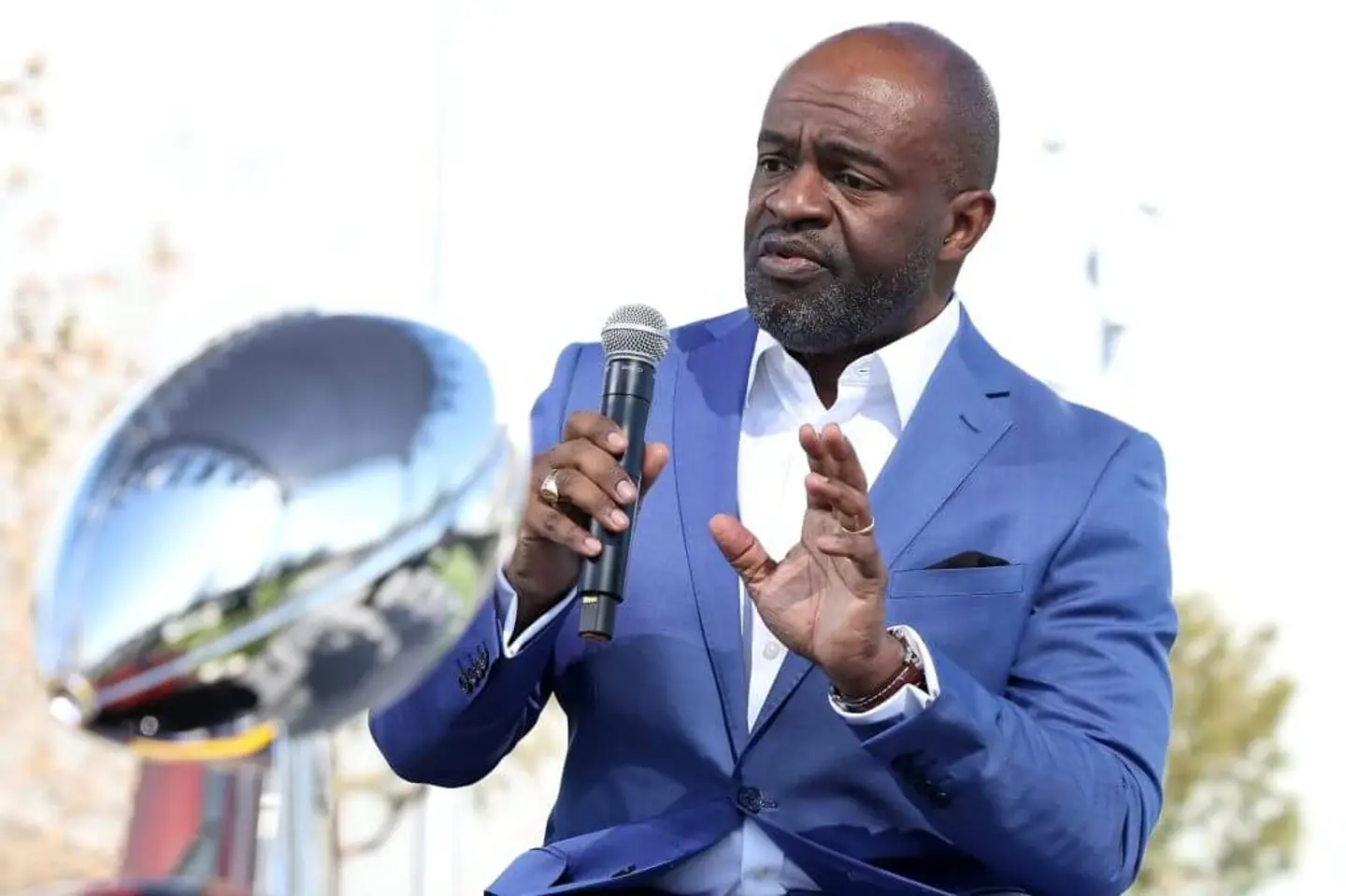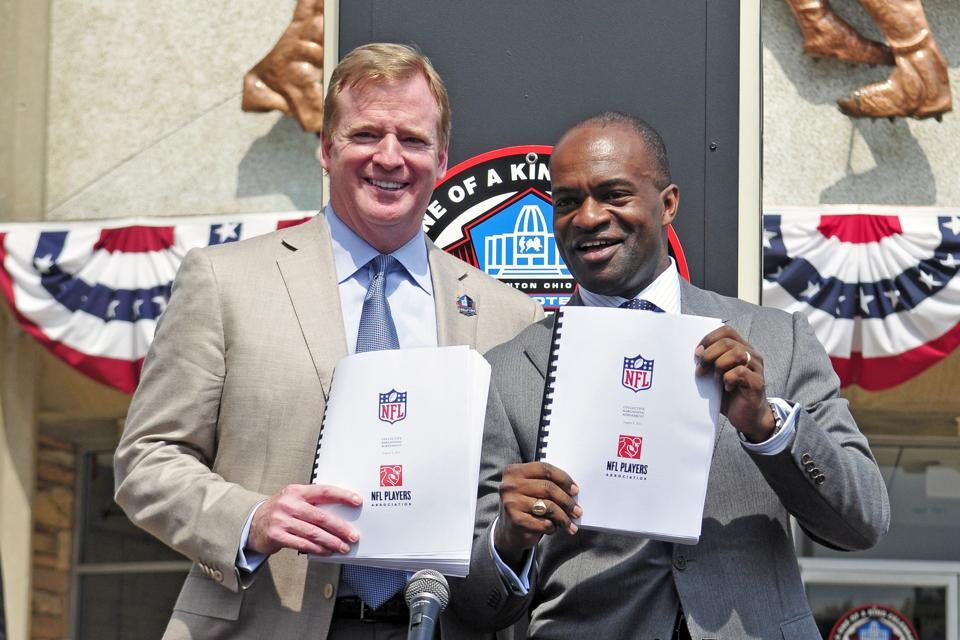What’s the No. 1 trait a strong union leader has to have?
When I was in the running in ’08-’09, I studied former MLB executive directors Marvin Miller, Don Fehr and Mike Weiner. I studied Paul Kelly, over at the NHL at the time. Billy Hunter from the NBA, (former NFLPA executive directors) Gene Upshaw and Ed Garvey. The one thing I would say that they all had in common was they all really understood who their player membership was — both their strengths and their weaknesses, and then they led accordingly. When I came in, I tried to emulate what both Marvin and Gene really did well. They both spent a tremendous amount of time teaching players about what a labor union does. And my time with Marvin was indispensable.
Gene Upshaw was a former player. You were an outsider. Does it make much of a difference in leading the union?
I really do not believe it is as binary as whether it is a former player or outsider. What matters is whether that person is curious, inquisitive and understands the labor and management dynamic. Player leadership should be really focused on how well they understand the business ecosystem and how well the candidate does.
This player leadership group, and Tretter, was criticized for the secretive nature of the last selection process. Some players and agents have said recently the lack of transparency of this executive committee has caused many players to lose interest in the NFLPA. How does the next executive director and NFLPA leadership help restore a healthy buy-in?
Well, it’s the players’ union. If you’re a board member, you elect the EC (executive committee). The EC reports to you, not the other way around, right? I mean, if you wanted information, a rep could pick up the phone and say, “Hey, give me the information.” If the EC says no, then you get the other board members together and you say, “Hey, give me the information.” I think that we have fallen into a blame culture so that people can always say it is someone else’s fault. Everybody should be asking themselves, “What was my role in how we got here?” And if your role was as a board member and you’re “I don’t know” or worse, “Nothing,” then you have your answer, don’t you?
How was the last selection process different from the one that led to your hiring?
It was not a secret process. Was it chaotic? Yes, was it. Was it hard running a law practice while I was a public candidate for the job? Yes. It was hard. At times it was awful. As I talk about in “Turf Wars,” 2009 was messy because of all sorts of internal conflicts within the union. The executive committee at the time woke up one morning and the executive director, who had had the job for longer than some of them had been alive, was dead. (Editor’s note: Upshaw died in August 2008 less than one week after being diagnosed with pancreatic cancer.) At the same time, the league had already declared that they were going to lock the players out in 2011.
I was most impressed when I sat down with the executive committee — and, remember, those guys were Drew Brees, Kevin Mawae, Brian Dawkins, Mike Vrabel, Kevin Carter, Domonique Foxworth, Jeff Saturday and others. I was stunned at how mature and how willing they were to take and absorb the pressure of the moment. … They were the most sober, concrete, curious and exacting group of people that I’ve ever met. They had a clear understanding of the existential threat to their union and what it was going to cost future players.
I can’t really comment on the process that led to the most recent process because I was not a part of it and because of attorney-client privilege. But I know exactly what the external and internal process was like in 2008 in 2009 and I know that was an executive committee that understood who they were, understood the owners were their business partners on one day and enemies on the other, and they understood the weight of the decision that they were about to make. It had very little to do with who the search firm was and more about who the men were who stepped up to lead. I remain so proud of them.
What’s one of the most important things that the next executive director must remain mindful of if he wants to give himself and the union the best shot at long-term success?
I think the role of the executive director in any sports union, if you had to boil it down to one thing, it’s teaching. I learned about the historic and never-ending battle between labor and management as a candidate for the job, and was blessed to have Marvin and Rich Trumka as mentors, and that is something you have to teach players and ignore at your own peril. Letting someone convince you that they speak the language of owners is a fool’s errand. I think what many players fail to realize is that if they are in the NFL now they are covered by a CBA fought for by mostly former players and they are beneficiaries. The current players will win or lose for future players.
Player empowerment was a big talking point during the second half of your time with the NFLPA. How do you see players changing on that front?
Now you’ve got a group of players coming out of college who, for the first time, have been paid (via Name, Image and Likeness deals). You know what I see that’s interesting is what’s going on in Dallas (with Micah Parsons) and what’s going on in Cincinnati (with Trey Hendrickson). That’s the first time that I’ve seen players openly talking back and demanding a level of respect. They are much less thankful and much more willing to demand a level of respect. It’s great. I think the owners hate it and want to crush that spirit.
So, the words of wisdom for the players as they look for their next executive director is to find someone who understands their strengths, weaknesses and goals, and helps them maintain their fighting spirit?
Exactly. Look, I had the job of a lifetime because I felt it as a calling. This should not be a “punch the clock” job. This union has to persevere, and borrowing the words of our constitution written at the time, I was willing to do that by “all means necessary.” It shouldn’t be for everyone because it is critically important, not only to the welfare of NFL players, but also their families, and for that, the union must persevere.







